| Jutland:
The Battle of Dogger Bank, Part Three
By Mike Bennighof, Ph.D.
February 2025
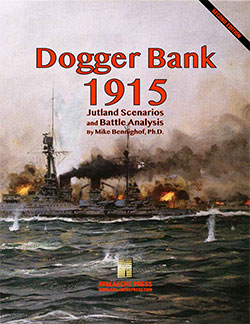 The first shots of what would become known as the Battle of the Dogger Bank (one of several in naval history) came from the German armored cruiser Blücher at the end of the German line of heavy ships. She carried a much lighter main armament than the battle cruisers, but her 210mm (8.2-inch) guns could match their range and as the fleet’s pre-war gunnery training ship she boasted outstanding accuracy. The first shots of what would become known as the Battle of the Dogger Bank (one of several in naval history) came from the German armored cruiser Blücher at the end of the German line of heavy ships. She carried a much lighter main armament than the battle cruisers, but her 210mm (8.2-inch) guns could match their range and as the fleet’s pre-war gunnery training ship she boasted outstanding accuracy.
The British pursued with the flagship Lion in the lead, followed by Tiger and Princess Royal. Beatty’s two remaining battle cruisers, the older New Zealand and Indomitable, could not match the speed of the three “Splendid Cats” and fell steadily behind, with New Zealand out-pacing Indomitable. Blücher’s shells in theory could penetrate the armor of the trailing British battle cruisers, but they were not even in sight and the Splendid Cats suffered no serious damage.
But Blücher directed most of her fire at the seven British destroyers threatening to charge forward to deliver a torpedo attack. Beatty ordered his light forces to drop back, while Hipper ordered his own to the front of his line, reasoning that sending them into a torpedo attack in the face of British battle cruisers making better speed than the torpedo boats would make the maneuver a suicide mission with only limited chance of success.
Steadily the British battle cruisers gained, all five ships now making well over their designed speed. The British stokers out-shoveled their German counterparts, while the German labored under the added burden of lower-quality coal. While later writers would point out Blücher’s speed - she was making 23 knots at this point - as the reason that Beatty caught up with the Germans, none of the three German battle cruisers were capable of much better than that. Even Derfflinger, the newest ship with clean boilers and a fresh, enthusiastic crew, could do not better than 24 knots.
At 0852, 27 minutes after Blücher had opened fire, Lion replied with her first ranging shot. It fell short, but the three Splendid Cats now touched 29 knots and the range continued to drop. At 0905 Lion had the range and Beatty signaled for his ships to open fire; Lion and Tiger began to fire full salvoes and Princess Royal fired her first ranging shots two minutes later. At 0911, all three German battle cruisers began to reply, with the 280mm (11-inch) guns of Moltke and Seydlitz and 305mm (12-inch) guns of Derfflinger.
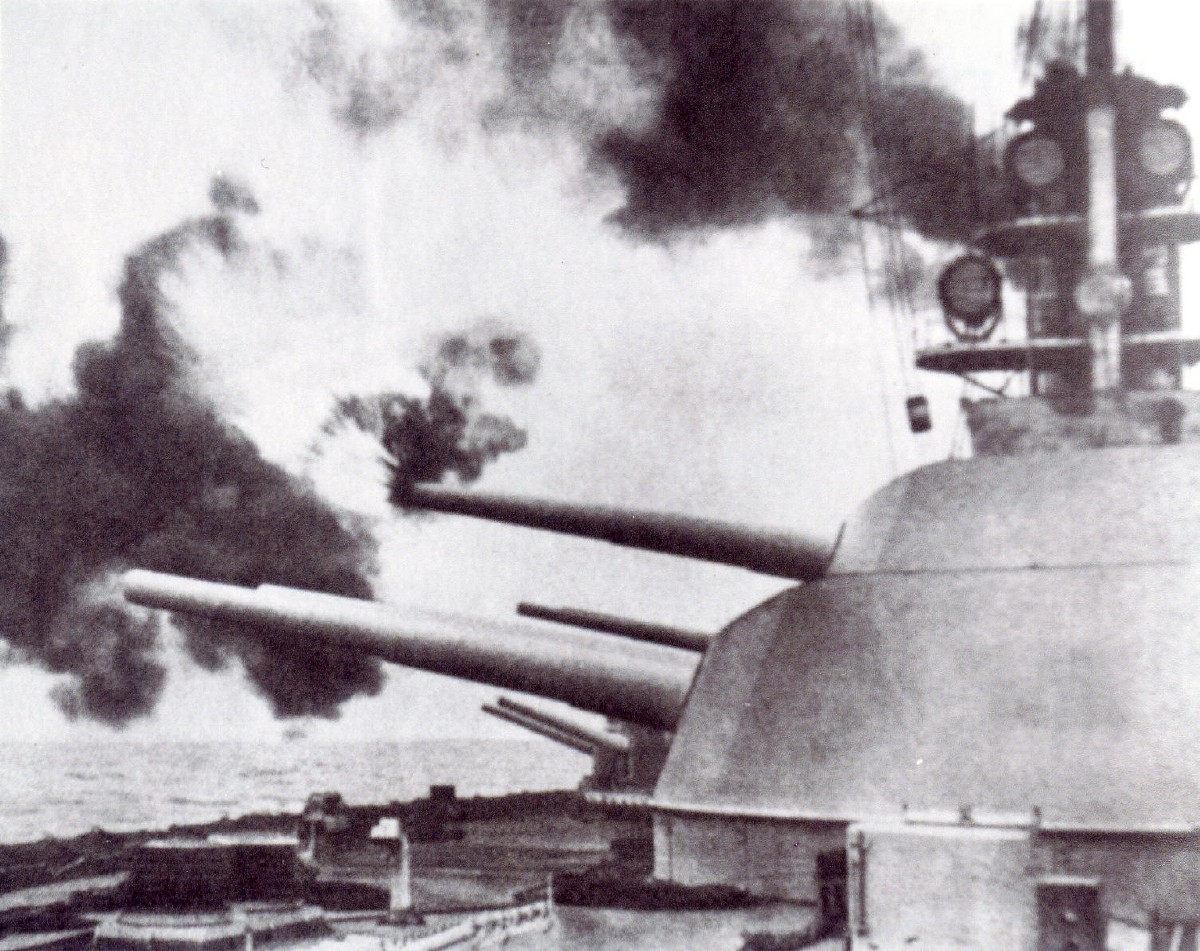
Seydlitz’s aft turrets fire at Dogger Bank.
The Germans initially concentrated their fire on Lion, as their smaller main guns lacked the range to hit the other British ships, but as the range closed Beatty ordered his ships to engage their opposite number, which they did except for Tiger. The newest British battle cruiser had been crewed with the rejects donated by the rest of the Grand Fleet and the sweepings of British naval prisons, and she not only shot poorly but fired at the wrong target, interfering with Lion’s attempts to engage the German flagship Seydlitz. Tiger’s gunnery officer mistook the fall of Lion’s shells for those of his own ship (this was why Beatty had ordered his ships to each engage a unique enemy target) but Tiger did score one accidental hit.
The first serious injury would be inflicted by Lion. At 0943 a 13.5-inch shell penetrated Seydlitz’s after armored deck and struck the barbette of her aftmost turret (Turret D). The shell didn’t penetrate, but the impact split a red-hot piece of armor from the inner wall of the barbette and flung it into the shell-handling room, starting a fire among the cartridges there. The crew tried to escape through the passage into the neighboring Turret C and in so doing opened both of the fireproof doors; when the cartridges exploded flame shot into the neighboring handling room and caused an explosion there as well. Of the 170 men in the two sets of turrets and handling rooms, four survived, all but one of them badly burned.
A stab of flame shot into the air as the interior of both turrets was incinerated, and Seydlitz appeared doomed. Only the prompt intervention of Pumpmaster Wilhelm Heidkamp saved the ship. The damage-control party could not find the flooding valves in the darkness, and their flashlights could not penetrate the smoke and poisonous fumes. But Heidkamp had been part of the crew cadre assigned to Seydlitz while she was still under construction at the Blohm und Voss shipyard in Hamburg, and he knew his ship well enough to find them despite the blinding conditions. Taking the red-hot pump wheel in his hands he flooded the ship’s after magazines, preventing a catastrophic explosion but burning his hands to the bone and scorching his lungs. He would finally succumb to the lung damage in 1931.
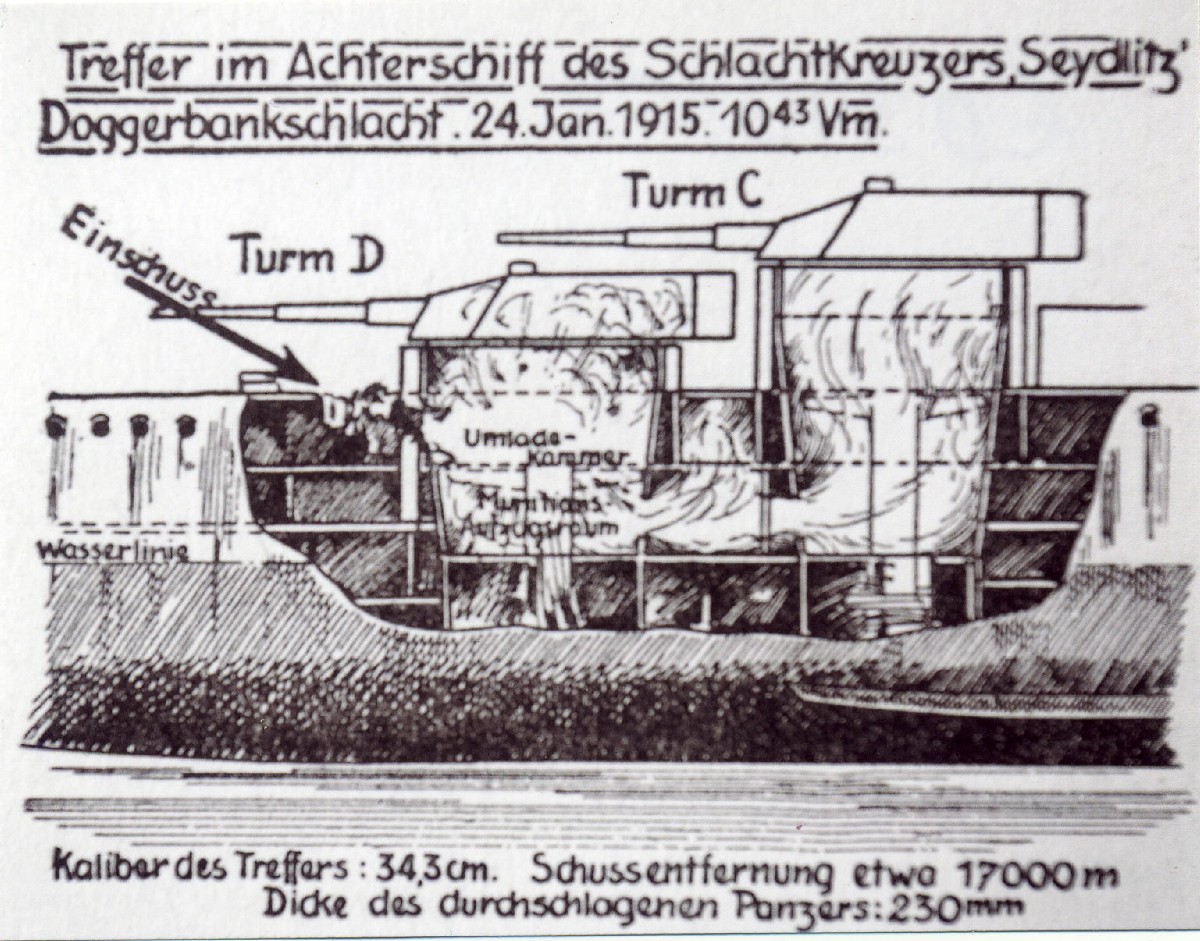
The explosions in Seydlitz’s aft turrets.
“Have a good last look at Seydlitz,” Moltke’s captain, Magnus von Levetzow, told his bridge crew, “before she goes.”
But Hipper’s flagship remained afloat and steaming at 23 knots. Her captain, Moritz von Egidy, ordered his three remaining turrets to fire as rapidly as possible, to empty their magazines and hopefully inflict damage on the British before the battle cruiser exploded. The admiral stood next to his flag captain, silently chain-smoking as the bridge crew tried to regain their composure.
Beatty finally ordered his squadron to reduce speed to 24 knots, what he estimated the Germans to be making. Princess Royal’s hull had not been cleaned since her deployment to the West Indies in late 1914, and she could not keep up the pace. Only Tiger could match the flagship, and Capt. Henry Pelly’s ship managed to blaze away at every German ship at one point or another, confusing her squadron mates’ fire and also masking their view of the enemy with her own smoke.
With her gunners undistracted by enemy fire, Moltke now savaged Lion in turn with multiple heavy shell hits, knocking out two of the ship’s three dynamos which in turn left her fire control without power. Beatty’s flagship would manage to restore some of that capacity and resume accurate fire, but Lion was rapidly taking on water.
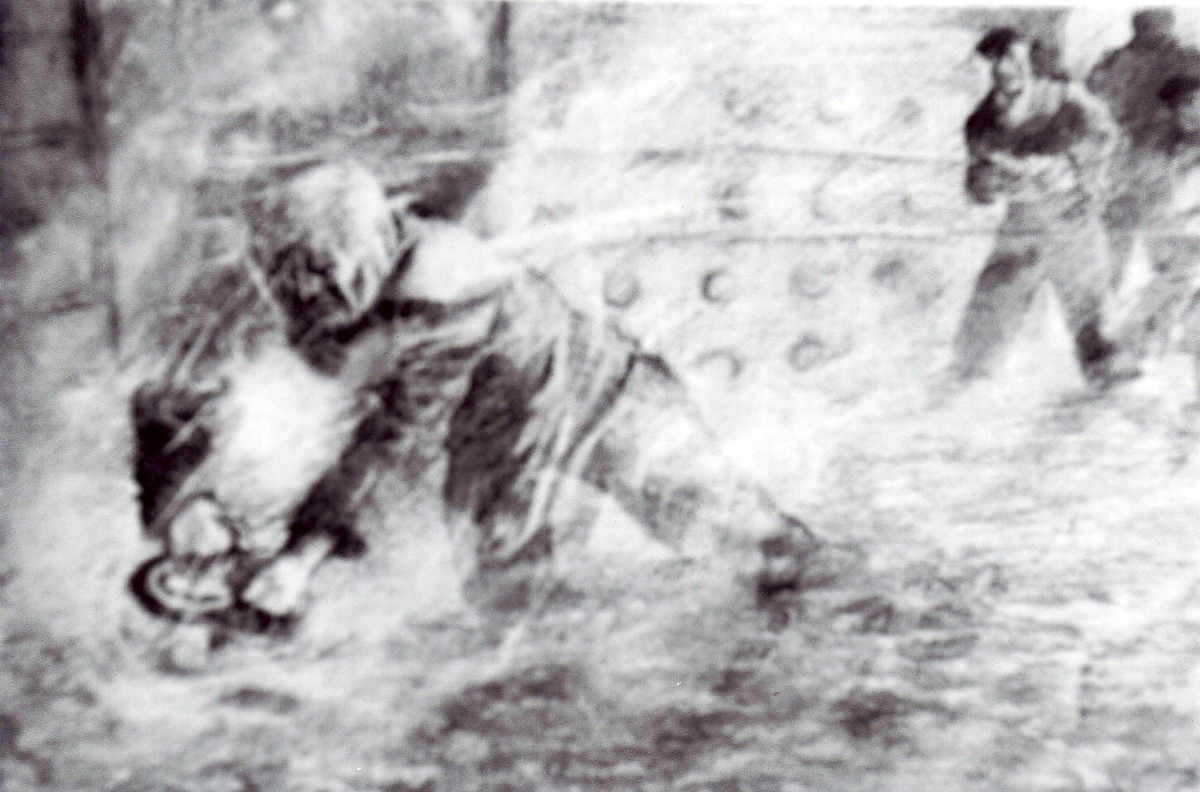
Wilhelm Heidkamp saves his ship and all aboard.
Blücher had fallen behind the three German battle cruisers, but Hipper did not order his three battle cruisers to close up the formation with her. The three slower British heavy ships - Princess Royal, Indomitable and New Zealand - turned their fire on Blücher, soon joined by the peripatetic Tiger. Yet despite taking many heavy hits, Blücher remained capable of both returning the fire with her lightweight guns and maintaining her inadequate speed. But this could not continue.
Unwilling to let the German battle cruisers escape, at 1027 Beatty ordered pursuit, but only Tiger received the signal, and then only part of it. She charged forward, again interfering with Lion, and soon received three serious hits from Moltke in rapid succession one of which set her ships’ boats and their fuel on fire; the resulting fireball caused Moltke to report that Tiger had exploded.
Lion received far more damage, taking multiple hits including one shell from Moltke that smashed in her armored belt amidships, rupturing her reserve water tanks and thereby contaminating the feed water for her boilers, and knocking out her last dynamo. All power and lights went out, and her speed dropped to 15 knots.
The battle had reached its climax. Each side had suffered damage, and had a ship in danger of destruction. The appearance of the German zeppelin L5 overhead signaled that the High Seas Fleet might well be about the appear, while the wounded Lion provided an ideal target for Hipper’s torpedo boats. The next few minutes would be crucial.
You can order Jutland: Dogger Bank right here.
The Jutland Saga
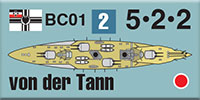 Jutland Second Edition Jutland Second Edition
Jutland: North Sea 1914
Jutland: Dogger Bank
Jutland: Risk Fleet
Retail Price: $233.96
Package Price: $190.00
Gold Club Price: $152.00
You can order the Jutland Saga right here.
Please allow an extra three weeks for delivery.
Sign up for our newsletter right here. Your info will never be sold or transferred; we'll just use it to update you on new games and new offers.
Mike Bennighof is president of Avalanche Press and holds a doctorate in history from Emory University. A Fulbright Scholar and NASA Journalist in Space finalist, he has published a great many books, games and articles on historical subjects; people are saying that some of them are actually good.
He lives in Birmingham, Alabama with his wife and three children. His Iron Dog, Leopold, could swim very well.
Want to keep Daily Content free of third-party ads? You can send us some love (and cash) through this link right here.
|
